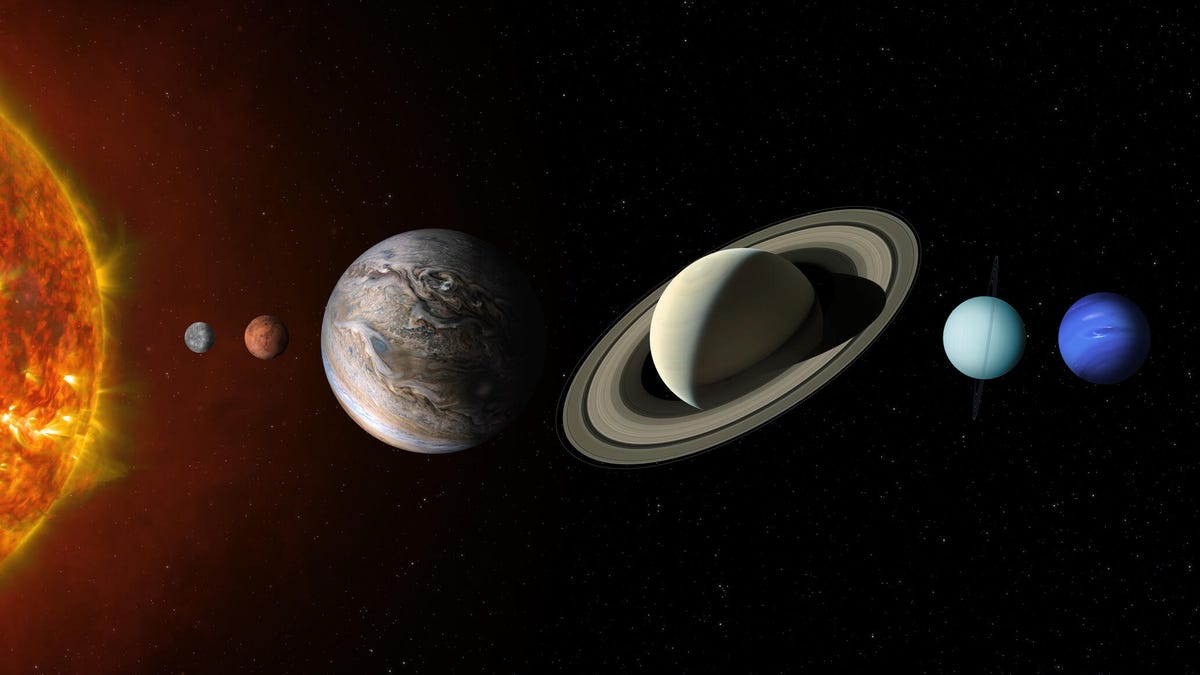Tech
Grab the Chance to See Six Planets in a Spectacular Planet Parade This Weekend

2025’s Spectacular Planet Parade: A Cosmic Spectacle for All
1. Introduction to the Planet Parade
The year 2025 begins with a celestial spectacle that promises to captivate sky enthusiasts and casual stargazers alike. A rare and thrilling event known as a planet parade is gracing our night skies, offering a unique opportunity to witness multiple planets aligned in a glorious display. This cosmic event is not just a treat for astronomers but a moment of wonder for anyone willing to venture outdoors and gaze upwards. The term ‘planet parade’ encapsulates the excitement of seeing several planets converge in the night sky, a phenomenon that, while not rare, is certainly awe-inspiring. This alignment is a reminder of the beauty and complexity of our solar system, inviting us to pause and appreciate the celestial ballet unfolding above.
2. Visible Planets and Viewing Tips
This spectacular parade features six planets: Venus, Mars, Jupiter, Saturn, Neptune, and Uranus. For those eager to embark on this celestial journey, the good news is that four of these planets—Venus, Mars, Jupiter, and Saturn—are visible to the naked eye under optimal conditions. However, to catch a glimpse of the more elusive Neptune and Uranus, a telescope is essential. The best viewing times are shortly after sunset, around 8:30 p.m. local time in the Northern Hemisphere. Venus, Saturn, and Neptune will be visible on the horizon, while Mars, Jupiter, and Uranus will dominate the southeastern sky later in the evening.
3. How Long the Parade Lasts and What’s Next
This celestial show is not a fleeting moment but a prolonged event, lasting from late January through late February. The planets are strategically positioned to offer a long viewing window, allowing enthusiasts to enjoy the parade nightly until February’s end. As the month concludes, the parade becomes even more extraordinary with the brief appearance of Mercury, making it a seven-planet spectacle. While Mercury’s proximity to the sun presents a challenge, the opportunity to see all seven planets (excluding Earth) in our solar system is a rare treat. By March, some planets will begin to fade from view, leaving Jupiter, Mars, and Uranus to continue their nightly display.
4. Regional Visibility Across North America
Geography is no barrier to enjoying this cosmic event, as most locations in the U.S., Canada, and Mexico offer prime viewing opportunities. Observatories in major cities like New York, California, Texas, Ohio, Calgary, and Mexico City confirm that the planets are visible across a wide range. Whether you’re in the northernmost regions or southernmost areas, the timing remains consistent, with the best views right after sunset. The uniformity of this event across such a vast area highlights the universal appeal of stargazing, uniting people across borders in shared wonder.
5. Essential Equipment for Optimal Viewing
While the naked eye suffices for four planets, telescopes are necessary to fully appreciate Neptune and Uranus. A telescope with an 8-inch aperture and 50x magnification is recommended to view Uranus and its rings, while 150x magnification is needed for Neptune. Even with such equipment, escaping light pollution is crucial for the best experience. Venturing away from city centers into darker skies enhances visibility, allowing the stars—and planets—to shine their brightest. Patience and clear skies are key, especially when seeking Mercury near the sun in late February.
6. Tools and Clarifying Definitions
For those new to stargazing, apps like Stellarium, Time and Date’s Night Sky Map, and Star Walk 2 are invaluable tools, providing precise locations of each planet. Understanding terms like ‘planetary parade’ and ‘planetary alignment’ can enhance the experience. While ‘planetary parade’ is a colloquial term, it effectively describes the glimpse of multiple planets from Earth. ‘Alignment’ often refers to planets on the same solar side, though not in a straight line as often depicted. Both terms capture the essence of this event: a rare moment of celestial harmony visible from our planet.
In conclusion, the 2025 planet parade is an event that transcends borders and expertise, inviting all to witness the beauty of our solar system. With proper planning and equipment, this cosmic display promises to be a memorable experience, fostering a deeper appreciation for the night sky and its wonders.